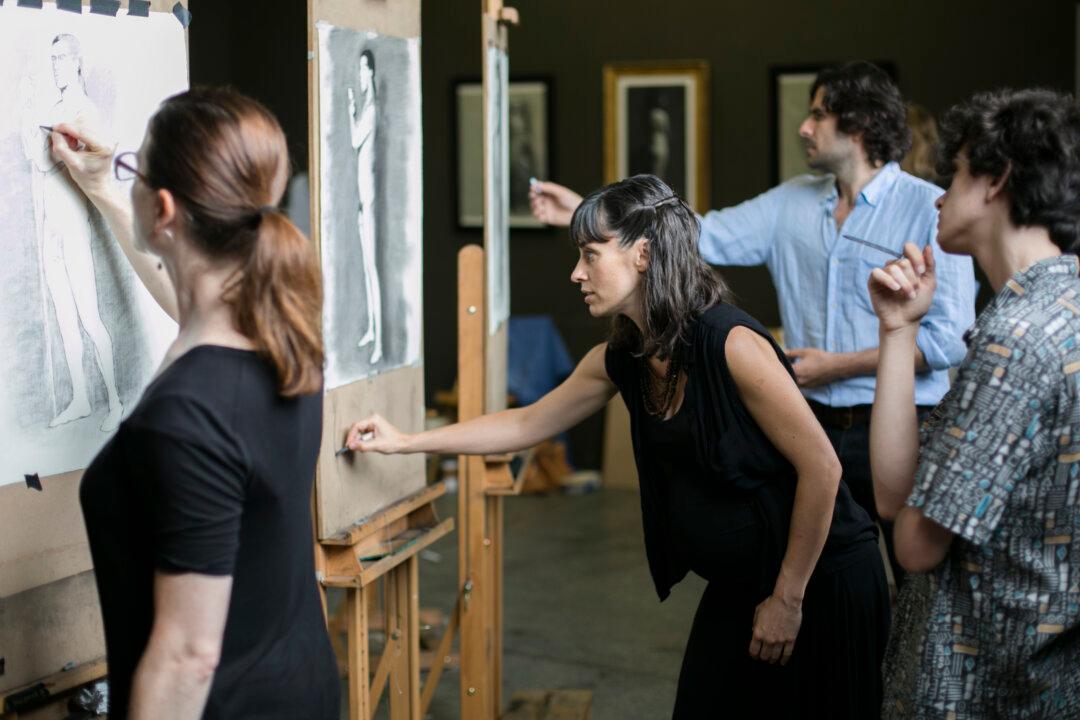NEW YORK—He was an American artist living in Florence for 10 years. She was a Spanish artist living in New York at that same time. You could imagine their plane flights nearly crossing each other above the Atlantic, traveling in opposite directions. Yet their trajectories ran in parallel. They shared the same love for classical methods of drawing, painting, and sculpture in the realist tradition, with a healthy drive for refinement and excellence.
Jordan Sokol and Amaya Gurpide met in upstate New York, painting landscapes with the Hudson River Fellowship in the summer of 2007. When their trajectories initially converged, they were already comparing notes on the artistic techniques they had learned so far: he at The Florence Academy of Art (FAA) in Florence, Italy, and she at the National Academy of Design, The Art Students League of New York, and the Grand Central Atelier (GCA) in New York. They were already joking about starting a school, synthesizing their insights, and teaching students with their combined knowledge.






